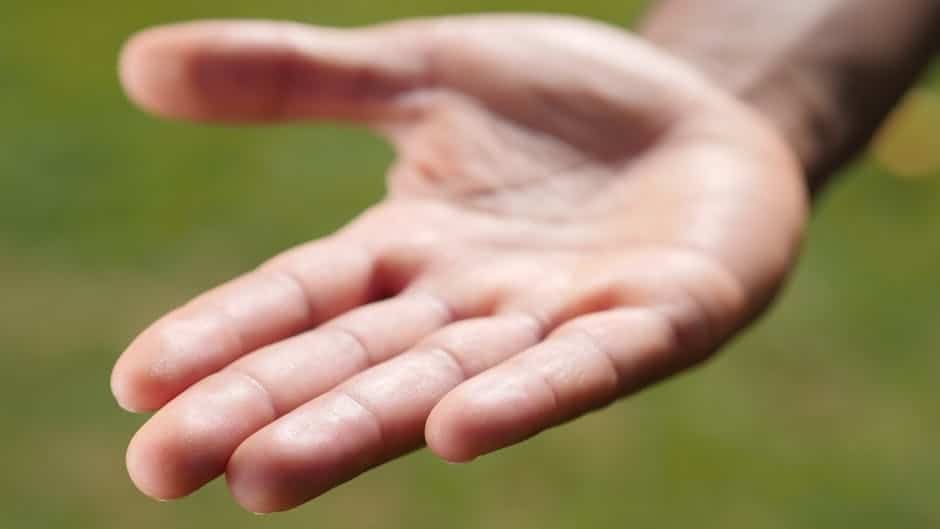
Introduction
Drug addiction is a complex condition that involves both physical and psychological elements. Central to the process of addiction is the brain’s reward system, which is heavily influenced by a neurotransmitter often called the “feel-good” chemical. This chemical plays a significant role in motivation, pleasure, and reinforcement of rewarding behaviors.
For individuals battling drug addiction, this neurotransmitter is essential in creating feelings of euphoria and driving the cycle of compulsive drug use. But do drug addicts crave this chemical itself, or is it the pleasurable effects that they desire? Understanding this intricate relationship helps us understand addiction and how to effectively treat it. In this article, we will explore the role of this neurotransmitter in drug addiction, how drugs impact its levels, and why addicts experience such intense cravings. We will also discuss the brain’s adaptation to drug use and its contribution to the addictive cycle.
Understanding Dopamine and Its Role in the Brain
What Is It?
Dopamine is a neurotransmitter, which means it is a chemical messenger responsible for transmitting signals in the brain and other areas of the central nervous system. It is involved in:
- Mood regulation
- Attention and focus
- Motivation and reward
- Pleasure and learning
This neurotransmitter is often associated with the “reward” system because it is released when we engage in enjoyable activities like eating, socializing, or experiencing pleasurable situations. This release creates feelings of satisfaction and pleasure, which can drive us to repeat those activities.
Dopamine and the Brain’s Reward System
The brain’s reward system is a network of regions responsible for reinforcing behaviors that help ensure survival, such as eating and reproduction. These regions include:
- The Nucleus Accumbens
- The Ventral Tegmental Area (VTA)
- The Prefrontal Cortex
This chemical is central to this system and plays a crucial role in creating pleasure when it is released in response to rewards. In the context of addiction, drugs can hijack this system, releasing much more of this neurotransmitter than natural rewards. This leads to intense feelings of euphoria, which motivates repeated drug use. Over time, the brain’s reward system becomes altered, and individuals may start using drugs more frequently to chase that high.
Call Now – Your Journey to Recovery Begins Today!

Take the first step towards a healthier life! Call now to connect with our compassionate team and start your recovery journey today. Your path to healing awaits!
Our recovery specialists are available 24/7 to provide support, and all calls are confidential and free. Reach out anytime – we’re here to help!
How Drugs Affect Dopamine Levels
Drugs and Dopamine Surges
Different drugs interact with the brain’s reward system in various ways. Some drugs, such as cocaine, methamphetamine, and opioids, cause a massive surge in its production.
- Cocaine: Blocks the reuptake of dopamine, keeping it active in the brain for longer periods.
- Methamphetamine: Stimulates an overwhelming release of dopamine, creating an intense “high.”
- Opioids: Trigger the release of dopamine by binding to opioid receptors in the brain.
This flood of this chemical is responsible for the intense euphoria users experience, which reinforces the cycle of drug use. As a result, individuals may begin to crave the pleasure associated with these surges, which fuels their addiction.
The “Dopamine High”
The pleasurable effects produced by the drug-induced surge of this neurotransmitter are often referred to as the “high.” This high is not only deeply rewarding but also extremely reinforcing, as it creates a powerful desire to repeat the drug use. Key points include:
- Immediate gratification: The high is experienced very quickly after taking the drug.
- Intensity: The pleasure is often more intense than the natural rewards the brain typically experiences.
Because of this, addiction to substances becomes easier to develop. The brain learns to associate drug use with this high, and the addict starts seeking out the drug to replicate that euphoric feeling.
Do Drug Addicts Crave Dopamine?
The Desire for the “High”
While addicts may appear to crave this chemical, research suggests that it’s not this neurotransmitter itself that they desire but the feelings associated with its release. Addicts crave:
- The euphoric feeling that comes from dopamine release.
- The relief from emotional distress or negative emotions.
As a result, drug addicts are not seeking this chemical directly, but rather the pleasurable experiences that it induces. These intense feelings are what keep addicts coming back to the drug.
Tolerance and Sensitization
- Tolerance: Over time, as an individual continues to use a drug, the brain becomes less sensitive to dopamine. To achieve the same effect, the person needs to consume higher doses of the drug. This leads to:
- Increased drug consumption.
- Escalating dependency.
- Sensitization: This occurs when the brain becomes more responsive to drug-related cues. Even in the absence of the drug, certain triggers can cause the brain to release dopamine, leading to:
- Heightened cravings for the drug.
- Increased likelihood of relapse.
These phenomena explain why addiction becomes more compulsive over time and why users find it difficult to stop using the drug.
The Role of Dopamine in Withdrawal
When a person stops using drugs, levels of this neurotransmitter in the brain drop significantly, which leads to:
- Depression
- Anxiety
- Fatigue
- Irritability
- Intense cravings for the drug
This decrease in dopamine is a major factor contributing to the distressing symptoms of withdrawal. The brain is struggling to adjust to functioning without the drug-induced dopamine surge, which is why withdrawal is often so difficult.
The Neurobiology of Addiction and Dopamine
The Brain’s Reward Circuit
The brain’s reward circuit is composed of several interconnected areas, including:
- The Nucleus Accumbens: Often called the brain’s “pleasure center,” it is critical in processing rewards.
- The Ventral Tegmental Area (VTA): This area produces dopamine and is involved in motivation and reinforcement.
- The Prefrontal Cortex: Responsible for decision-making, impulse control, and rational thought.
When drugs are consumed, they activate these regions and trigger an overwhelming release of this chemical. Over time, however, chronic drug use can lead to long-term changes in the reward circuit, making it more difficult for individuals to experience pleasure from natural rewards. These changes contribute to the cycle of addiction.
Find Hope and Healing: Call Us Now!
Take the first step towards a brighter future! If you or a loved one is seeking support for substance abuse, we are here to help. Call us today and let our dedicated team guide you to the right treatment options. Your path to recovery starts now!
- Connect with an expert addiction specialist 24/7/365
- Learn about treatment costs
- Arrange fast access to a treatment program
Request a Call
OR
Make a Call
Dopamine and the Prefrontal Cortex
The prefrontal cortex plays an essential role in regulating behavior. This neurotransmitter helps maintain the function of this region, but chronic drug use can impair its ability to:
- Control impulses
- Make rational decisions
When dopamine levels are altered by drug use, the brain’s ability to manage cravings and make good decisions diminishes, increasing the likelihood of continued drug use.
Cravings Beyond Dopamine
Psychological Cravings
While dopamine plays a significant role in physical cravings, psychological cravings also play a large part in addiction. Many drug addicts experience cravings driven by:
- Environmental triggers: Certain places or situations may remind the person of drug use.
- Emotional states: Stress, anxiety, or boredom can lead to cravings for the pleasurable feelings that drugs provide.
These psychological cravings are a result of the brain’s association between drug use and reward, which creates a strong desire for the pleasurable effects of the drug even when it is not present.
The Role of Stress in Cravings
Stress is a major trigger for cravings, as it can lead to:
- Increased cortisol levels: A stress hormone that can interact with the dopamine system.
- Cravings for relief: Drugs may be used as a coping mechanism to relieve the emotional distress associated with stress.
This is why many drug addicts turn to substances during stressful times, reinforcing the cycle of addiction.
The Impact of Dopamine on Long-Term Recovery
Restoring Dopamine Balance in Recovery
During recovery, one of the primary goals is to restore balance to the brain’s dopamine system. This process involves:
- Gradual re-adjustment: The brain needs time to recalibrate and regain its ability to function without the presence of drugs.
- Supportive therapies: Cognitive-behavioral therapy (CBT), physical exercise, and social support help the brain recover and reduce cravings.
As dopamine levels stabilize over time, addicts may experience a reduction in cravings and improvement in overall well-being.
The Risk of Relapse
Even in recovery, the risk of relapse remains. The craving for dopamine is a constant challenge, especially when:
- Dopamine levels remain low: The brain may not fully restore its natural balance.
- Triggers or stress occur: These can prompt the brain to seek out the drug for relief.
This is why long-term recovery requires continuous support, therapy, and lifestyle changes to address the physical and psychological aspects of addiction.
Call Now – Your Journey to Recovery Begins Today!

Take the first step towards a healthier life! Call now to connect with our compassionate team and start your recovery journey today. Your path to healing awaits!
Our recovery specialists are available 24/7 to provide support, and all calls are confidential and free. Reach out anytime – we’re here to help!
Conclusion
In conclusion, drug addicts do not necessarily crave this neurotransmitter itself, but they crave the pleasurable effects that its release produces. The brain becomes conditioned to associate drug use with intense euphoria, leading to a strong desire for more. The cycle of addiction is driven by both physical and psychological cravings, all centered around the brain’s reward system. Tolerance, sensitization, and withdrawal further contribute to the compulsive nature of addiction.
Understanding the complex relationship between dopamine and addiction is crucial for developing effective treatments. If you or a loved one is struggling with addiction, call our helpline at (844) 561-0606 to explore treatment options today.
Do drug addicts crave dopamine directly?
No, drug addicts do not crave dopamine directly. They crave the pleasurable effects that dopamine release produces. When drugs flood the brain with dopamine, it creates intense feelings of euphoria and satisfaction, which drive repeated drug use.
How does dopamine contribute to drug addiction?
Dopamine plays a central role in addiction by reinforcing behaviors that lead to pleasure and reward. Drugs that increase dopamine levels create a powerful motivation to continue using, as the brain associates the drug with intense euphoria. Over time, this leads to dependency and addiction.
Can addiction be treated by simply restoring dopamine levels?
While restoring dopamine balance is an important part of addiction recovery, it is not enough on its own. Treatment typically includes a combination of therapies such as cognitive-behavioral therapy (CBT), medication-assisted treatment (MAT), and lifestyle changes. Addressing both the psychological and physical aspects of addiction is crucial.
How does withdrawal affect dopamine levels?
During withdrawal, dopamine levels drop significantly, which leads to symptoms like depression, anxiety, and intense cravings. This is because the brain is adjusting to functioning without the drug, which initially flooded it with dopamine. Restoring dopamine balance takes time and is a key part of recovery.
Why do drug addicts relapse even after treatment?
Relapse often occurs because the brain’s dopamine system has been altered by drug use, making it more difficult to feel pleasure from natural rewards. Triggers such as stress or environmental cues can prompt the brain to crave the pleasurable effects of the drug, leading to relapse. Long-term recovery requires continuous support, therapy, and lifestyle changes to help manage cravings and triggers.
Our helpline is 100%
free & confidential
If you or someone you care about is struggling with drug or alcohol addiction, we can help you explore your recovery options. Don’t face this challenge alone—seek support from us.
Programs
Resources
Will my insurance
cover addiction
treatment?
We're ready to help
Find the best
drug or alcohol treatment
center
Are you or a loved one struggling with addiction? Call today to speak to a treatment expert.















